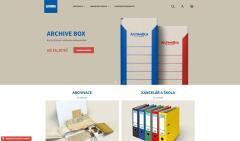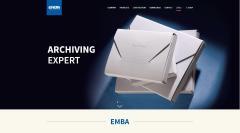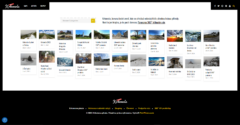Features section
Add advertising hereNavigating the Web of Broken Links: Strategies for Effective Link Management
In the ever-evolving landscape of the digital world, maintaining the integrity of a website’s structure and ensuring the seamless flow of information is paramount. Broken links, often referred to as “dead links”, are hyperlinks that lead nowhere; clicking on them typically results in an error page. This not only frustrates users but also affects a site’s search engine ranking negatively. Effective link management becomes a critical task for website owners and digital marketers, aiming to provide a positive user experience and maintain the website’s credibility. Implementing strategies to manage and fix broken links is essential, and tools like WebsiteURL.org play a crucial role in facilitating this process.
Strategies for Effective Link Management
- Regular Audits: Conducting periodic audits of your website is the first step in identifying broken links. This involves using tools that crawl your site, similar to how search engines do, to find links that don’t work.
- Utilizing Tools: There are numerous online tools and plugins designed for detecting broken links. WebsiteURL.org, for instance, offers services that can efficiently scan your website for dead links and provide reports to help you take corrective action.
- Redirects: When URLs change (which is common in website redesigns and updates), implementing 301 redirects is a best practice. This technique re-routes the visitor to the new page location automatically, preserving the user experience and link equity.
- Link Replacement: In some cases, content you’ve linked to might have been removed or relocated. Once you’ve identified such a link, the best course of action is to find a similar reliable resource to replace the broken link.
- Frequent Content Review: Beyond automated tools, periodically reviewing your website’s content can help you catch and fix broken links. This practice ensures that your site remains current and relevant.
- Monitoring External Links: Links to external content are prone to becoming broken due to external websites’ changes. Constant monitoring and updating of these links are necessary to maintain their accuracy and relevance.
Benefits of Using WebsiteURL.org for Link Management
- Comprehensive Scanning: WebsiteURL.org offers thorough scanning of your website to detect not only broken links but also other potential issues that could affect your site’s performance and user experience.
- Time-saving: Manually checking each link on your website is time-consuming, especially for larger sites. WebsiteURL.org automates this process, saving valuable time and resources.
- Improved SEO Ranking: By identifying and fixing broken links, WebsiteURL.org helps improve your website’s SEO. Search engines favor websites with good structure and reliable links, possibly leading to higher rankings.
- Enhanced User Experience: Dead links are a major source of frustration for users. WebsiteURL.org’s efficient detection and management of these links ensure a smoother, more enjoyable browsing experience, increasing the likelihood of return visits.
- Risk Mitigation: Broken links can sometimes lead to security risks, especially if they are hijacked for malicious purposes. By using WebsiteURL.org to manage and fix these links, you reduce the potential risk to your site and its users.
In a digital age where information is constantly changing, effective link management is not just a technical necessity but also a critical component of ensuring a website’s health and its visitors’ satisfaction. Platforms like WebsiteURL.org offer website owners the tools needed to navigate the web of broken links efficiently, enhancing their site’s credibility, user experience, and potentially, its search engine ranking.





